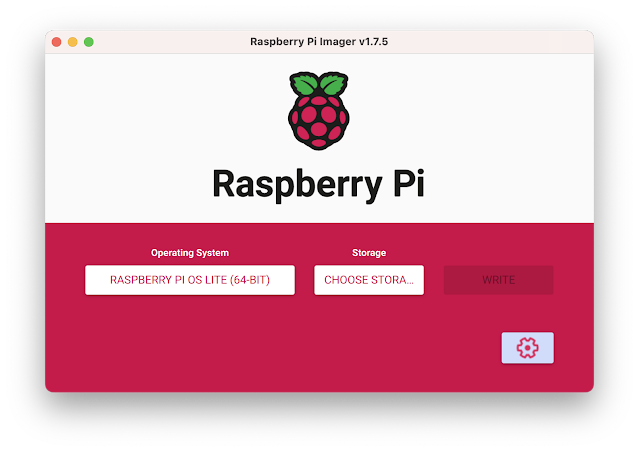Exam-related Internet shutdowns in Iraq and Algeria put connectivity to the test


Over the last several years, governments in a number of countries in the Middle East/Northern Africa (MENA) region have taken to implementing widespread nationwide shutdowns in an effort to prevent cheating on nationwide academic exams. Although it is unclear whether such shutdowns are actually successful in curbing cheating, it is clear that they take a financial toll on the impacted countries, with estimated losses in the millions of US dollars.
During the first two weeks of June 2023, we’ve seen Iraq implementing a series of multi-hour shutdowns that will reportedly occur through mid-July, as well as Algeria taking similar actions to prevent cheating on baccalaureate exams. Shutdowns in Syria were reported to begin on June 7, but there’s been no indication of them in traffic data as of this writing (June 13). These actions echo those taken in Iraq, Syria, Sudan, and Algeria in 2022 and in Syria and Sudan in 2021.
(Note: The interactive graphs below have been embedded directly into the blog post using a new Cloudflare Radar feature. This post is best viewed in landscape mode when on a mobile device.)
Iraq
Iraq had reportedly committed on May 15 to not implementing Internet shutdowns during the Continue reading
Classification of BGP Route Leaks (RFC 7908)
While preparing the Internet Routing Security webinar, I stumbled upon RFC 7908, containing an excellent taxonomy of BGP route leaks. I never checked whether it covers every possible scenario1, but I found it a handy resource when organizing my thoughts.
Let’s walk through the various leak types the authors identified using the following sample topology:
Classification of BGP Route Leaks (RFC 7908)
While preparing the Internet Routing Security webinar, I stumbled upon RFC 7908, containing an excellent taxonomy of BGP route leaks. I never checked whether it covers every possible scenario1, but I found it a handy resource when organizing my thoughts.
Let’s walk through the various leak types the authors identified using the following sample topology:
Network Automation Benefits: Beyond Geek Speak
Even if an organization starts small, network automation around security, compliance, and risk management will deliver significant benefits and payoffs.Apple’s Augmented Reality announcement
 Uncollected outbursts and Mind Farts on Vision Pro
Uncollected outbursts and Mind Farts on Vision Pro
Protecting GraphQL APIs from malicious queries


Starting today, Cloudflare’s API Gateway can protect GraphQL APIs against malicious requests that may cause a denial of service to the origin. In particular, API Gateway will now protect against two of the most common GraphQL abuse vectors: deeply nested queries and queries that request more information than they should.
Typical RESTful HTTP APIs contain tens or hundreds of endpoints. GraphQL APIs differ by typically only providing a single endpoint for clients to communicate with and offering highly flexible queries that can return variable amounts of data. While GraphQL’s power and usefulness rests on the flexibility to query an API about only the specific data you need, that same flexibility adds an increased risk of abuse. Abusive requests to a single GraphQL API can place disproportional load on the origin, abuse the N+1 problem, or exploit a recursive relationship between data dimensions. In order to add GraphQL security features to API Gateway, we needed to obtain visibility inside the requests so that we could apply different security settings based on request parameters. To achieve that visibility, we built our own GraphQL query parser. Read on to learn about how we built the parser and the security features it enabled.
Continue reading
Network Break 434: Cisco Licensing To Get Simpler, Bluecat Buys Again, Hashicorp Money Problems, and Itential Pops A Release
Take a Network Break: Drew is on holiday (again) and Ethan shows up. Who knew he was still around ? We start with FU, Cisco Live was underwhelming announcing a new focus simplicity and that customers hate their licensing, Bluecat spends again, Hashicorp gets a financial slapping, Itential ships a new version and Quantum Space Networking.
The post Network Break 434: Cisco Licensing To Get Simpler, Bluecat Buys Again, Hashicorp Money Problems, and Itential Pops A Release appeared first on Packet Pushers.
Network Break 434: Cisco Licensing To Get Simpler, Bluecat Buys Again, Hashicorp Money Problems, and Itential Pops A Release
Take a Network Break: Drew is on holiday (again) and Ethan shows up. Who knew he was still around ? We start with FU, Cisco Live was underwhelming announcing a new focus simplicity and that customers hate their licensing, Bluecat spends again, Hashicorp gets a financial slapping, Itential ships a new version and Quantum Space Networking.netlab Release 1.5.4: New Junos Platforms
Stefano Sasso added two new Junos platforms in netlab release 1.5.4:
- vJunos Evolved (vPTX) – a new VM-based product Juniper released a few weeks ago
- vSRX running as a vrnetlab-packaged container.
There are also the usual bug fixes, and we moved the documentation to netlab.tools.
netlab Release 1.5.4: New Junos Platforms
Stefano Sasso added two new Junos platforms in netlab release 1.5.4:
- vJunos Evolved (vPTX) – a new VM-based product Juniper released a few weeks ago
- vSRX running as a vrnetlab-packaged container.
There are also the usual bug fixes, and we moved the documentation to netlab.tools.
Raspberry Pi 4 real-time network analytics
 |
| CanaKit Raspberry Pi 4 EXTREME Kit - Aluminum |
Next, follow instruction for installing Docker Engine (Raspberry Pi OS Lite is based on Debian 11).
The diagram shows how the sFlow-RT real-time analytics engine receives a continuous telemetry stream from industry standard sFlow instrumentation build into network, server and application infrastructure and delivers analytics through APIs and can easily be integrated with a wide variety of on-site and cloud, orchestration, DevOps and Software Defined Networking Continue readingSetting up your own Cloud-GPU Server, Jupyter and Anaconda — Easy and complete walkthrough
Note: One of the important tips for lab environments is to set an auto-shutdown timer, below is one such setting in GCP

I have been working on a few hosted environments which include AWS Sagemaker Notebook instances, Google Cloud Colab, Gradient (Paperspace) etc and all of them are really good and needed monthly subscriptions, I decided to have my own GPU server instance which can be personalized and I get charged on a granular basis.
Installing it is not easy, first, you need to find a cloud-computing instance which has GPU support enabled, AWS and GCP are straightforward in this section as the selection is really easy.
Let’s break this into 3 stages
- Selecting a GPU server-based instance for ML practice.
- Installing Jupyter Server — Pain-Point Making it accessible from the internet.
- Installing Package managers like Anaconda — Pain-Point having Kernel of conda reflect in Jupyter lab.
Stage-1
For a change, I will be using GCP in this case from my usual choice of AWS here.

Choose GPU alongside the Instance
Generic Guidelines — https://cloud.google.com/deep-learning-vm/docs/cloud-marketplace
rakesh@instance-1:~$ sudo apt install jupyter-notebook # Step1: generate the file by typing this line in console jupyter notebook Continue reading
Worth Reading: Building Stuff with Large Language Models Is Hard
Large language models (LLM) – ChatGPT and friends – are one of those technologies with a crazy learning curve. They look simple and friendly (resulting in plenty of useless demoware) but become devilishly hard to work with once you try to squeeze consistent value out of them.
Most people don’t want to talk about the hard stuff (sexy demoware results in more page views), but there’s an occasional exception, for example All the Hard Stuff Nobody Talks About when Building Products with LLMs describing all the gotchas Honeycomb engineers discovered when creating a LLM-based user interface.
Worth Reading: Building Stuff with Large Language Models Is Hard
Large language models (LLM) – ChatGPT and friends – are one of those technologies with a crazy learning curve. They look simple and friendly (resulting in plenty of useless demoware) but become devilishly hard to work with once you try to squeeze consistent value out of them.
Most people don’t want to talk about the hard stuff (sexy demoware results in more page views), but there’s an occasional exception, for example All the Hard Stuff Nobody Talks About when Building Products with LLMs describing all the gotchas Honeycomb engineers discovered when creating a LLM-based user interface.



